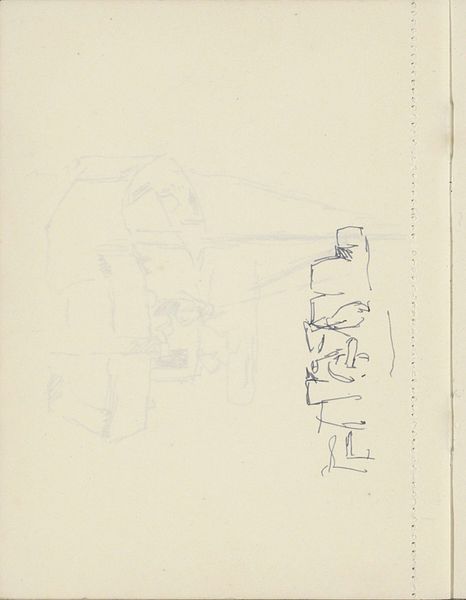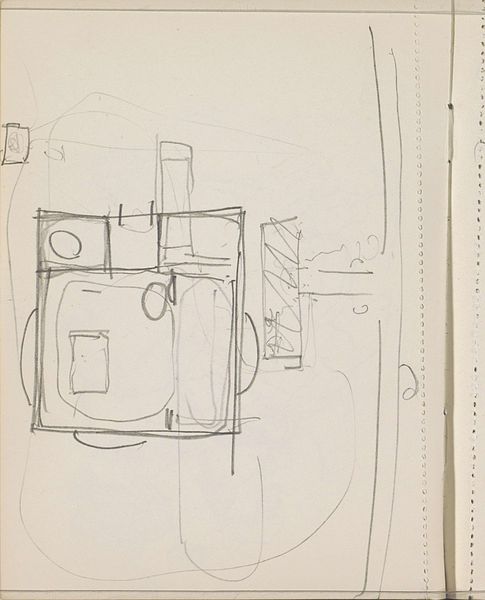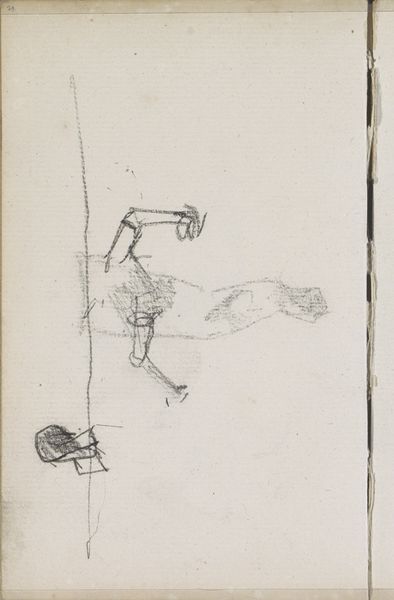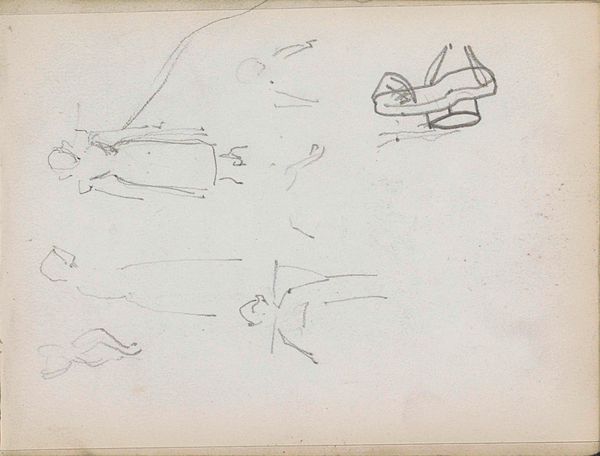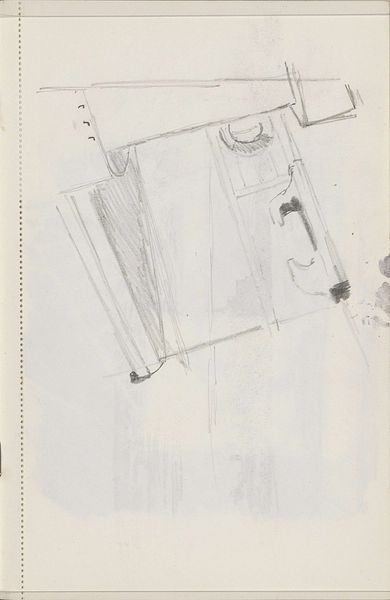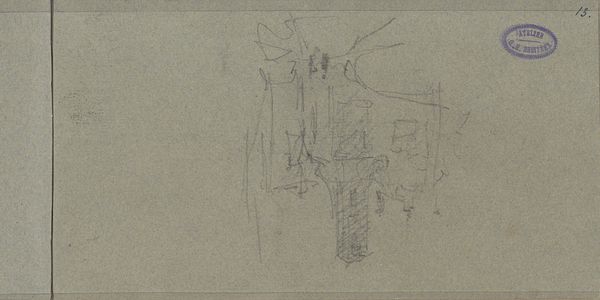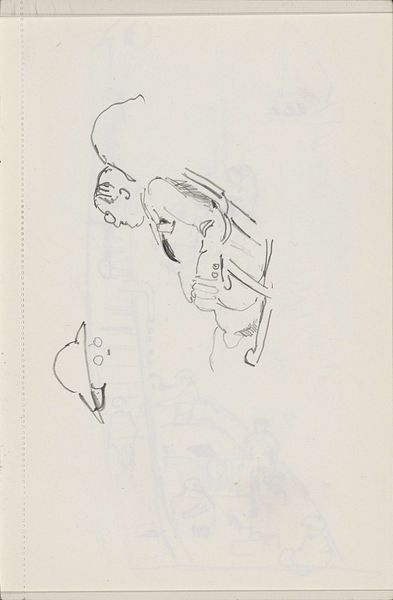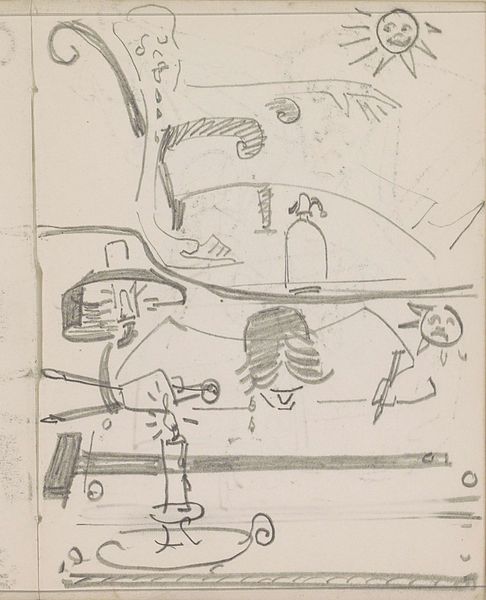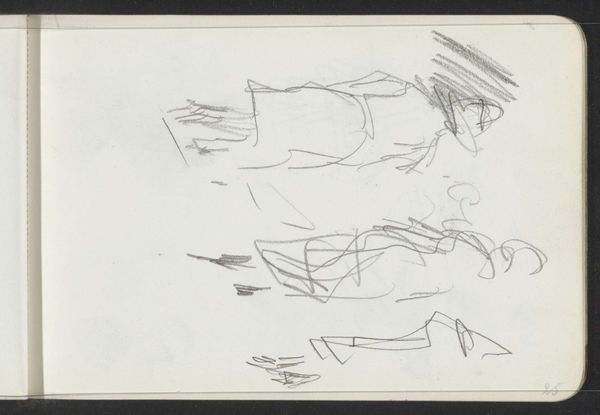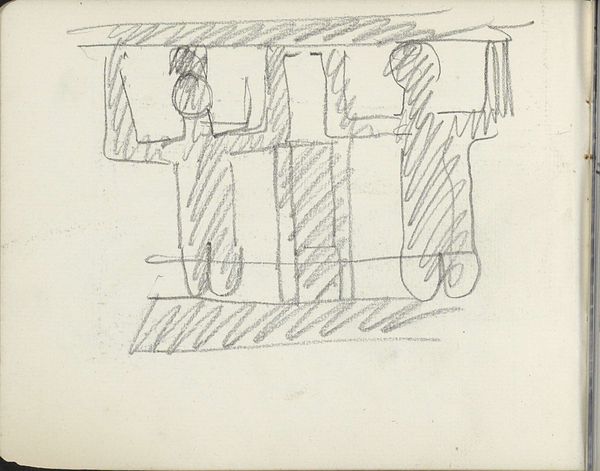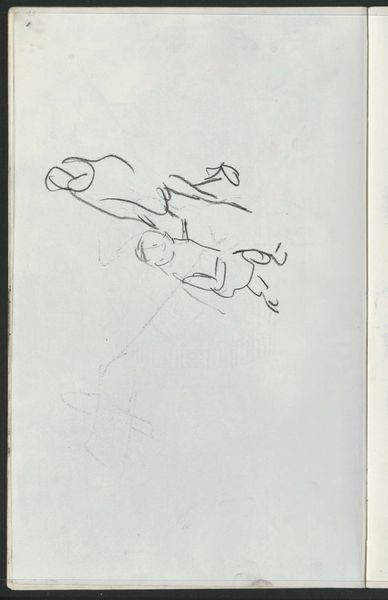
drawing, pencil
#
portrait
#
drawing
#
hand-lettering
#
lettering
#
hand drawn type
#
hand lettering
#
figuration
#
personal sketchbook
#
hand-drawn typeface
#
pencil
#
typography style
#
sketchbook drawing
#
sketchbook art
#
small lettering
Copyright: Rijks Museum: Open Domain
Curator: Looking at this drawing titled “Twee Afrikaanse krijgers,” created sometime between 1916 and 1945, the thing that immediately jumps out is this casual combination of figuration with some typography, almost like it's a doodle from a personal sketchbook. It's at the Rijksmuseum. What are your initial impressions? Editor: Honestly? It feels fragmented, almost dreamlike. These warriors are...outline figures, and there’s this "Mobil oil" can floating near them. It is like two worlds colliding on the page, isn't it? Makes me think about displacement, not only spatial. Curator: Absolutely. It reflects, I think, the period in which it was created. This was a time of great social and political upheaval, and this work can be understood as engaging with themes of colonialism, the representation of African identity, and the intersection of trade and the Western gaze. How are these figures represented, how are they being defined through the eyes of the author? It opens to many interpretations. Editor: Yeah, that's true. The oil can next to the fighters makes a weird statement...it's an artifact that symbolizes modernity clashing with an idealized, maybe even exoticized, view of African warriors, as if Africa, the fighters, could simply be “fueled” by the same substance that Western modernity is fueled by. A quick pencil sketch like this has so much meaning once you slow down to give it attention. Curator: Precisely. And what about the technique? The lines are tentative, almost unfinished, suggesting the work as an ongoing process, a space for questioning and imagining the world and its multiple historical realities. This is also apparent in other sketchbook drawings. Editor: Right. The fragility of the pencil on paper makes everything feel provisional. It’s almost self-aware, acknowledging its own limitations in depicting such complex issues. The unfinished quality becomes part of the narrative, like a perpetual search. Well, it surely inspired me, especially regarding the creative process in drawing. Curator: It does invite a pause. A moment of contemplation around what images, sketches, and artistic practices mean in a wider discourse of cultural and political meaning making. It invites reflection about responsibility, and imagination.
Comments
No comments
Be the first to comment and join the conversation on the ultimate creative platform.
